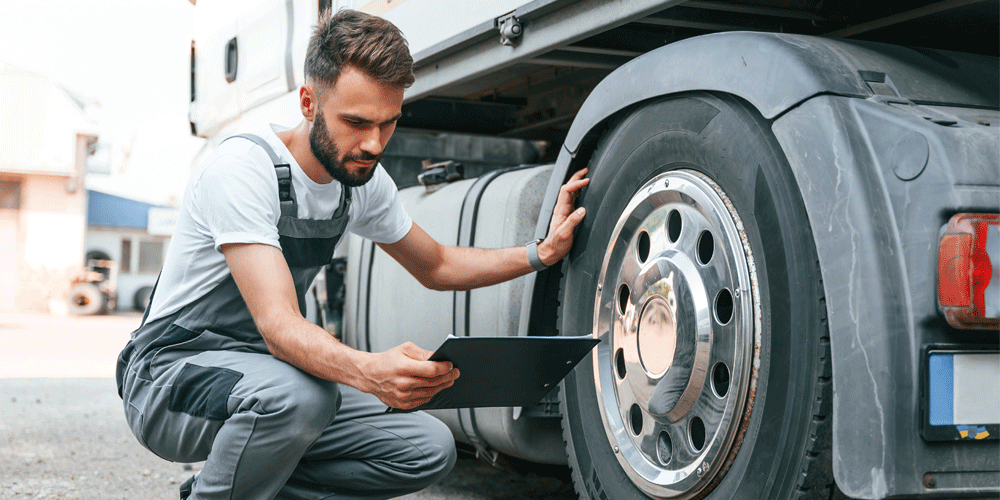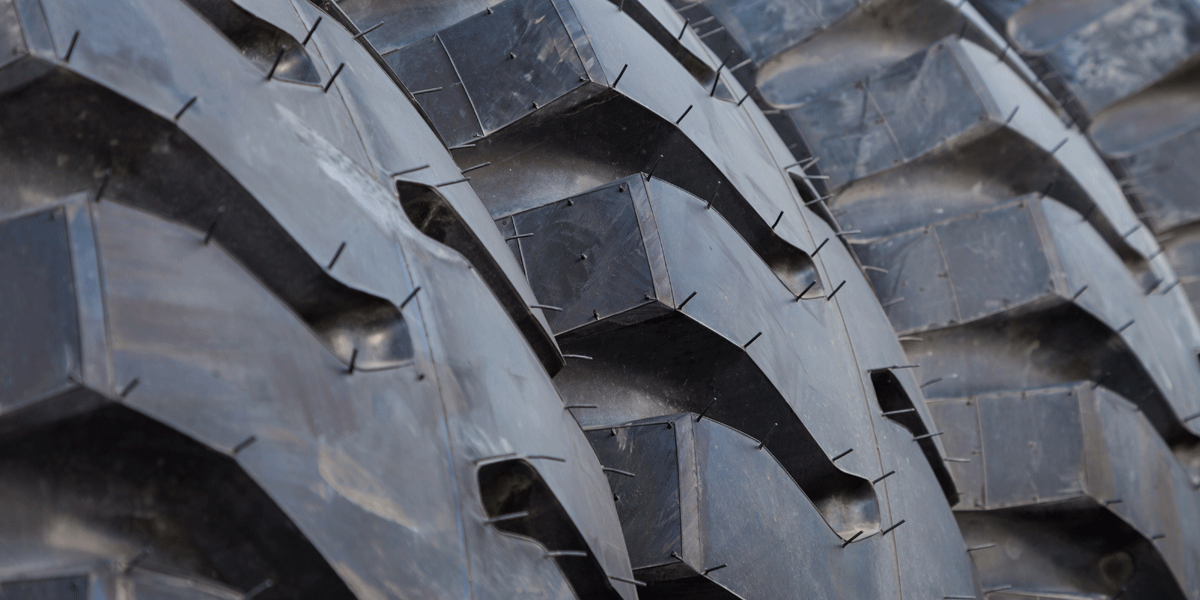Michael Carlson is a safety manager with ATS. He assists drivers, as well as the operations team, adhere to safety protocols. Before coming to ATS, he had years of hands-on safety experience. He worked for the railroad for a while before starting a career driving, where he hauled hazmat freight for eight years. Michael loves working for safety at ATS because he believes in the program. ATS has a great safety team and it takes each and every person to make the roads and the company safer.
As you know, you play a vital role in transporting goods and products across long distances. But with great responsibility comes great caution. One of the most crucial parts of your job is ensuring the safety of yourself and other road users. And that's where tire inspections come in.
The tires on your truck are under a lot of stress and wear due to the heavy weight they carry. This can cause them to deteriorate over time, leading to unsafe driving conditions and potential accidents. That's why it's so important to inspect your tires regularly to make sure they’re in good condition and roadworthy.
By checking your tires for punctures, cuts, uneven wear, and low tire pressure, you can identify potential issues early on and address them before they turn into bigger problems. This helps to prevent accidents and ensures that you and your fellow drivers stay safe while you’re on the job.
As a former truck driver myself, I know how important pre-trip inspections are and how important it is to pay careful attention to each tire during your inspection.
You may not know (or remember) how to thoroughly inspect your tires. In fact, tire violations are among the most common violations cited in roadside inspections. In this article, I’ll help refresh your memory and teach you about the parts of a tire and how you can inspect them for wear and tear.
When you’re done reading, you’ll feel well-equipped to inspect your tires and prevent any tire-related incidents.
The Different Parts of a Tire
During your pre-trip inspection, taking a quick glance at the tires or just kicking them isn't enough. You shouldn’t just look at the top part of the tire. You need to get in there and inspect all parts of the tire.
On the steer tires and drive tires, you’ll need to check:
- Rims
- Lug nuts
- Hub
- Inner side wall
- Tread depth
- Tire pressure
- Outside side wall
Since the tires are the only point of contact between your truck and the road, it's vital to thoroughly inspect each tire.
Here’s a rundown of what you should be looking for:
Rims
Look at the inside of the rim for any signs of damage on the rim. Check for hub oil. If you see hub oil, that could be a sign of a bad inner wheel seal.
You should also ensure there’s no spacing between the rims when you’re inspecting duals.
Lug Nuts
I know it seems time-consuming, but you need to check every lug nut on each and every tire. They shouldn’t be loose.
If you notice rust streaks coming from the lug nut, that could be an indicator that the lug nuts are loose. Moisture can get in behind the lug nuts when loose and will create those streaks as the wheel spins. Placing a hand on every lug is a great way to make sure you inspect every one.

Hub
Check your hubs to ensure the cap is in place. Look at the hub oil level. There’s a sight glass you should be able to see through. If you can’t see through this because it’s dirty, pop the cap off and look inside to check the fluid level.
On your drive tires, you can’t check the hub oil because it’s a sealed unit. You’ll only be able to check the hub oil levels on the steer tires.
Inner Side Wall
When you check the inner sidewall of the tire, look for any cuts or bulges in the tire. If you can see a cut that exposes the tire cord, the tire needs to be replaced. Getting caught with an exposed tire cord will result in an out-of-service (OOS) violation.
Tread Depth
Tread depth requirements vary depending on whether you’re looking at your drive tires or your steer tires.
When you check the tread depth on the steer tires, ensure you have at least 4/32 inches to avoid a violation. If you’re down as low as 2/32 inches, you can get an OOS violation. If you have a bad spot where you’re down to 2/32 inches, take your tread depth sensor adjacent to that area and check it there too.
On your drive tires, the tread can be as low as 2/32 inches. If you’re as low as 1/32 inches, you can get an OOS violation. Make sure you check adjacent treads to ensure you have the proper tread depth all over the tire.
Be sure you’re not checking the tread depth on the top of a wear bar or a stone thrower tread. These areas will naturally give you a little bit less tread.
Tire Pressure
Again, it’s not enough just to kick the tire or lightly press on it — especially when it comes to checking tire pressure. It’s very hard to know what the pound per square inch (PSI) is by simply kicking it or hitting it with a hammer.
You need to actually put a gauge on your tires to ensure they have the proper pressure. You can get an OOS violation for anything under 50 percent of its maximum pressure.
Your tires will have different PSI requirements depending on what type of tire it is/its size.
Outside Side Wall
When you move to the outside sidewall, look for any cuts, bulges or any other sort of damage. There could be a plug that will result in an OOS violation.
Tire-Related Violations
Tire issues come with serious consequences. First and foremost, blowing a tire on the road can be extremely dangerous. A blowout can cause the driver to lose control and swerve — potentially hitting other drivers or tipping over entirely. The blown tire can also hit another vehicle on the road.
These accidents can be preventable if you inspect your tires daily.
You can also be given tire-related violations at roadside inspections that can have a significant impact on your time, wallet and safety record. You may receive violations for inadequate air pressure or tread depth, improper mounting, tire imbalance and worn tires.
Depending on the severity of the violation, you can be placed out of service. You won’t be able to drive again until the tire is fixed or replaced.
Not only is that time-consuming and costly, but your safety record can take a hit. Violations come with Compliance, Safety and Accountability (CSA) points that carry over to your trucking company. A driver can get too many points and be taken out of hiring guidelines. This will lead to their termination.
Too many violations on your record will also have an impact on which trucking companies will work with you in the future.

The Importance of Pre-Trip Inspections
The next time you hit the road, remember to give your tires a quick once-over and make sure they're up to par. Your safety, and the safety of others, depends on it!
As you’re doing those pre- and post-trip inspections, it really pays to take that 15 to 20 minutes to complete a thorough inspection. It’ll help you be a lot safer on the road and help avoid costly violations and repairs.
Need a pre-trip inspection refresher? Check out this list of everything you should check during a pre-trip inspection and a post-trip inspection.
Wondering what officers are looking for when they inspect you? Check out these tips from a commercial vehicle inspector.

